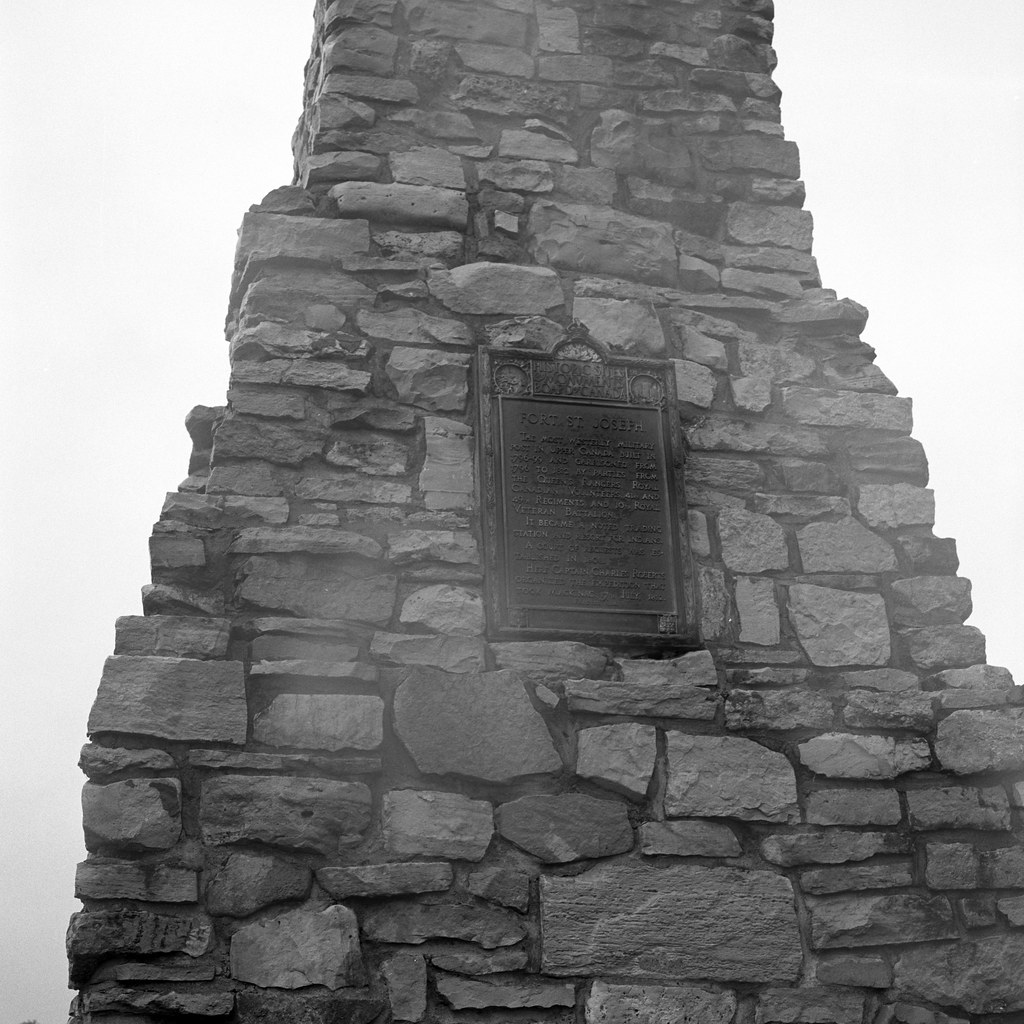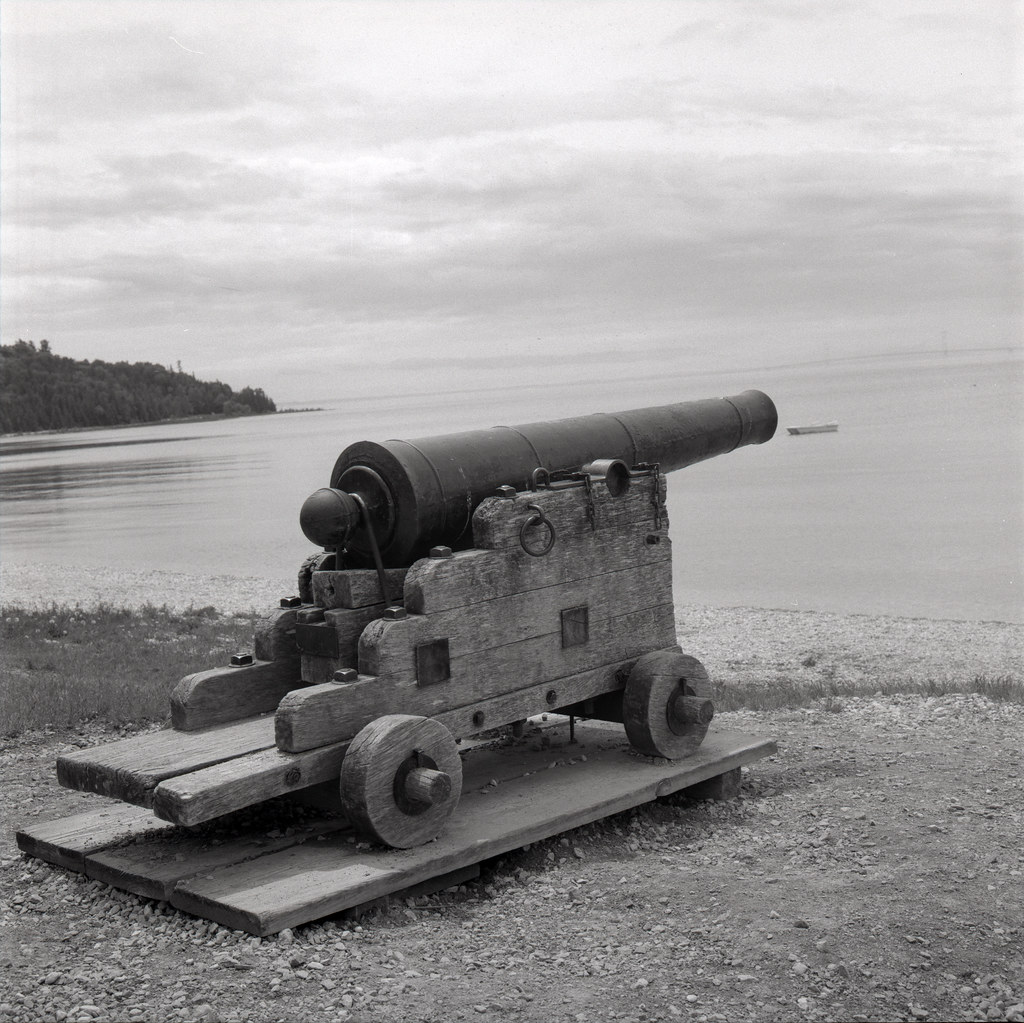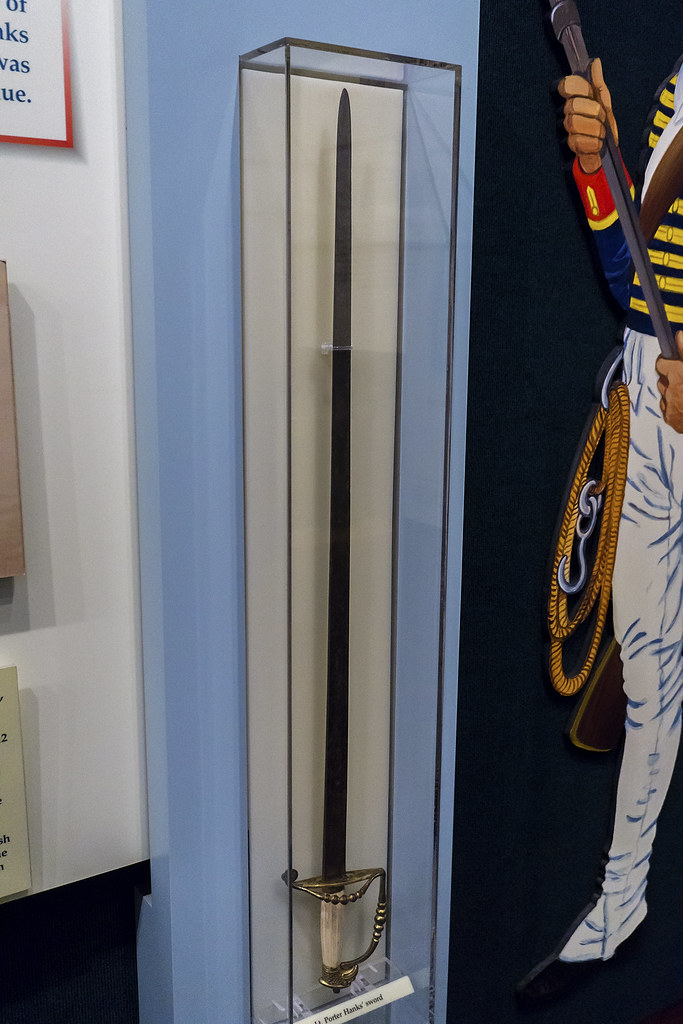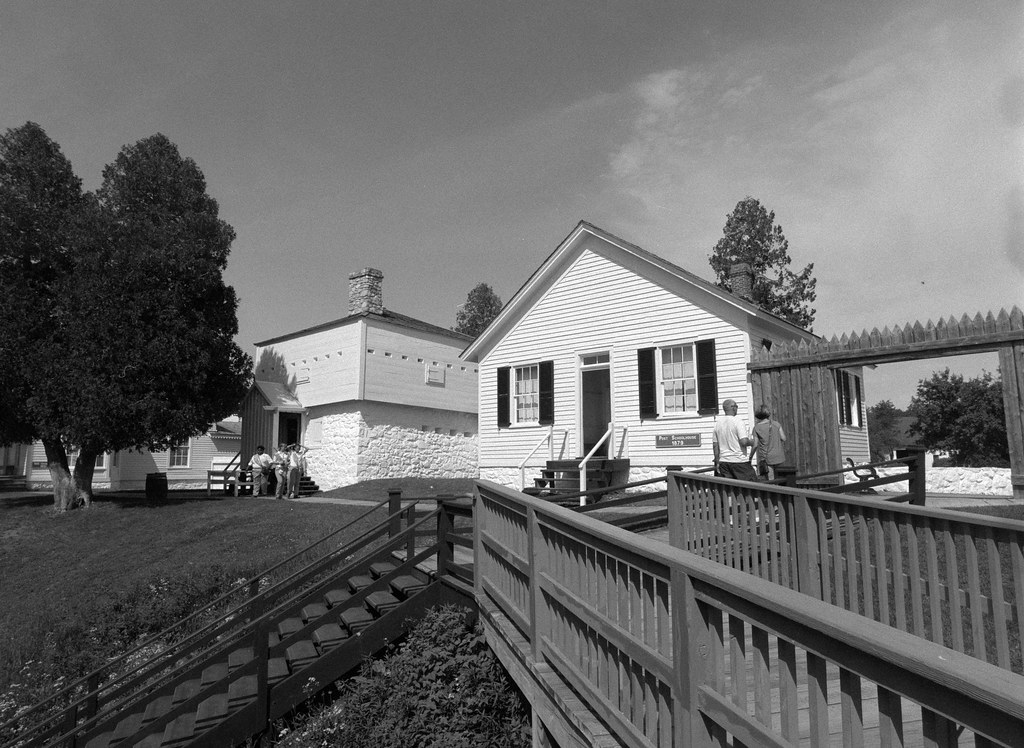The history of Mackinac Island and the War of 1812 in the Northern part of what is now Michigan and Ontario is actually a trilogy of events that lead to the eventual British Victory in the North. In the 19th Century communication was a slow and dangerous journey for the couriers that carried messages from the larger posts in the south. This was both a help and a hindrance to the theatre in the north. Fort Mackinac was built by the British 1780 near the end of the American Revolution as the island fort better defended than the old French fort, Fort Michilimackinac, on the mainland that was captured during the French Indian War. The fort was turned over to the Americans in 1796 in compliance with the Jay Treaty, forcing them to move the garrison to Upper Canada establishing Fort St. Joseph on St. Joseph Island, a day’s sail from the island.

Rolleiflex 2.8F – Carl Zeiss Planar 80mm 1:2.8 – Kodak Tri-X 400 – Kodak Xtol (1+1) 9:00 @ 20C
Unlike his American counterparts, when General Isaac Brock took charge of the British Army in Upper Canada he made a point of making sure that his officers were kept very much in the loop with current events, even Captain Charles Roberts of the 10th Royal Veteran Battalion, and commander of Fort St. Joseph in the far north. Roberts commanded a small garrison of 47 men of the 10th RVB, most of whom were older soldiers and had a love of the drink more than duty. But when War was declared in June of 1812, Brock dispatched a local fur trader, William McKay to take his canoe party the 1,900 kilometres to give Roberts the orders to take back Fort Mackinac. Fort St. Joseph also acted as a post for the Northwest Company and had many local traders and natives moving through it, so when McKay arrived on the 8th of July, Roberts recruited near 400 native warriors from local tribes along with 150 Metis, Voyageurs, and other Fur Traders to join the expedition. But counter-orders soon arrived calling off the attack, the Adjunct-General of the British Army in North American ordered Roberts to focus on defence. But when Brock found out he sent another set of orders that Roberts should use his own digression. Rather than face attack himself or lose the native warriors, Roberts departed for Fort Mackinac on the 15th of July, his Regular forces aboard the HMS Caledonia, a 3-gun Brig pressed into service from the Northwest Company, followed by ten bateaux and seventy war canoes.

Rolleiflex 2.8F – Carl Zeiss Planar 80mm 1:2.8 – Kodak TMax 100 – Kodak D-76 (1+1) 9:30 @ 20C
Unlike Captain Roberts at Fort St. Joseph, Lieutenant Porter Hanks, commander of a 61 man garrison at Fort Mackinac had not heard anything from his commander, General William Hull at Detroit, or Washington DC is nearly nine-months when a local trader reported a massive gathering of natives and traders at Fort St. Joseph. Concerned, Lieutenant Hanks called on Michael Dousman to go and investigate what was happening and report back to him. Dousman on his journey ran into Robart’s expedition and was quickly intercepted and captured before he could return to the American fort. The British had only one question for the trader, did the American garrison at Mackinac know about the war? Of the course, Dousman was unaware there was even a war on, and neither did the Americans. They also found out that the fort mounted only seven guns, only one of which could reach the harbour, but the approach to the north was relatively undefended. Roberts ordered the squadron to approach the island from the north.

Sony a6000 – Sony E PZ 16-50mm 1:3.5-5.6 OSS
Landing late on the 16th of July, Roberts employed stealth and moved his force through the woods. They quickly evacuated the civilians from the small settlement that occupied the high ground to the north of the fort, setting up the three canons that they dragged from the Caledonia into the houses. When dawn broke on the 17th he ordered a single shot fired at the fort. The sudden noise awoke Lieutenant Hanks, and he was soon told that a British officer and some local residents were at the gate under a flag of truce, demanding that Hanks surrender the fort. “War? What War?” was Hanks reaction to the demand. The British also had encouraged the civilians to exaggerate the number of native warriors present. If it had just been the British regulars, Hanks would’ve made the British pay for the fort in Blood, but he did not like the prospect of the Natives massacring not only the regular troops but the civilian population on the island. Hanks surrendered. But the British weren’t finished yet, two American ships, inbound from Fort Dearborn (Chicago), unaware the fort was captured because the British left the American flags flying sailed into the harbor and tied up, the British jumped and captured the unsuspecting crews of the USS Erie, and the USS Friends of Good Will, two other ships were also present and taken by the British, the USS Mary and USS Salina. The American prisoners were gathered up and sent down to Detroit in the captured boats, joining them were any civilians who refused to swear their allegiance to the British Crown. But this wasn’t the last action the island or the north would see in the war.

Mamiya m645 – Mamiya-Sekor C 35mm 1:3.5 N – Kodak Plus-X 125 – Blazinal (1+25) 6:00 @ 20C
In an odd twist of fate, Lieutenant Hanks upon his arrival was arrested for cowardice, in his bloodless surrender of the fort, he and another officer were killed with General Brock opened fire on Fort Detroit in August of 1812. The USS Friends of Good Will eventually was used by the Royal Navy as the HMS Little Belt and served in the Battle of Lake Erie in 1813. Today Mackinac Island is a state park, the fort itself is open to the public as a living history museum restored to how it was in the 1880s before the Army left. However, the gates are original to the British construction in 1780. The spot where Robert’s party landed in 1812 is a village known as British Landing, with the high ground being occupied by Fort Holmes, constructed originally in 1814 as Fort George and today a reconstruction of the blockhouse and the original 1814 earthworks stabilised.
Written with files from:
Guidebook to the Historic Sites of the War of 1812 Second Edition by Gilbert Collins – 2006 The Dundurn Group Publishers
Web: www.galafilm.com/1812/e/events/mackinac.html
Web: www.warof1812.ca/batmac.html
Web: www.eighteentwelve.ca/?q=eng/Topic/13